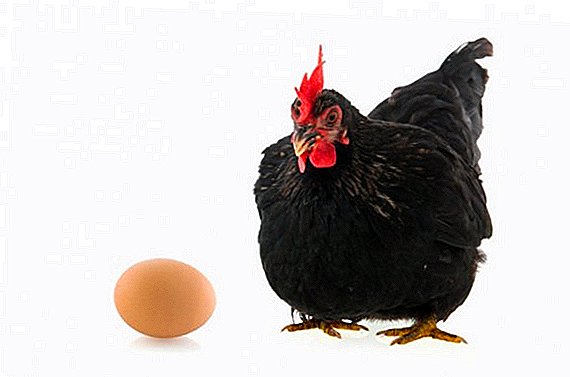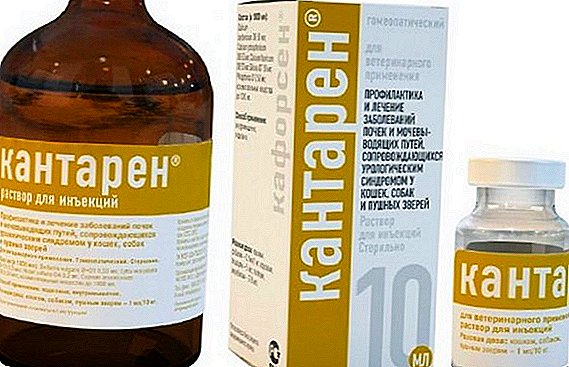 Diseases of the genitourinary system - one of the most common among domestic animals. The rich experience of veterinary practice and the availability of modern and effective drugs make these problems quite solvable, the main thing is not to let the disease take its course and to treat pets in time. Among the drugs that are often prescribed to animals for the treatment of kidney diseases, urinary canals and related diseases, the most benign is Kantaren. According to the instructions, it is suitable for cats, dogs, and many other pets (mammals).
Diseases of the genitourinary system - one of the most common among domestic animals. The rich experience of veterinary practice and the availability of modern and effective drugs make these problems quite solvable, the main thing is not to let the disease take its course and to treat pets in time. Among the drugs that are often prescribed to animals for the treatment of kidney diseases, urinary canals and related diseases, the most benign is Kantaren. According to the instructions, it is suitable for cats, dogs, and many other pets (mammals).
Composition and release form
In addition to the excipients (for solution, purified water and ordinary salt; for tablets, usually calcium stearate) contains the following substances:
- Barberin (alkaloid) for the withdrawal of small stones and salts;
- cantharidin (promotes relaxation, relieves cramps);
- calcium sulphides (combating inflammation, including purulent);
- arsenic copper (effective against pathogens).
 Available in tablets and in the form of a solution for injection.
Available in tablets and in the form of a solution for injection.Most often, veterinarians prescribe "Kantaren" as tablets for cats in urology or urolithiasis, although, according to the instructions, and in practice, the application is equally effective for other animals (dogs, horses, ferrets, etc.).
Did you know? Samuel Hahnemann himself, the founder of homeopathy, began to treat animals with homeopathic remedies. He noted that four-legged patients are much more susceptible to treatment, since they do not reduce its effect by their bad habits.
Pharmacological properties
Basic properties:
- relieving muscle spasms;
- removal of inflammatory processes;
Anti-inflammatory drugs also include the ASD fraction 3, Solikoks, Flexoprofen.
- contribute to the normalization of kidney function;
- inhibition of salt crystallization in the urinary canals.

Indications for use
"Kantaren" is used in veterinary medicine as a remedy for urological diseases, in the formation of stones and cystitis.
Did you know? Disease urolithiasis or urolithiasis occurs among all types of domestic animals, but most often in cats. They are much more likely than dogs to die from it.
Order of use and dose
The drug is used in courses, the duration of which depends on the disease, its severity and type of animal. The dosage is selected by the veterinarian, based on many factors, including weight.
Injection
For injection, the drug is based on saline, with the content of active substances. It looks like a clear liquid. It is released in bottles of ten and one hundred milliliters (for small and large animals, respectively).  How to prick "Kantar", tell the vet, as it is possible and subcutaneous, and intramuscular administration.
How to prick "Kantar", tell the vet, as it is possible and subcutaneous, and intramuscular administration.
Such drugs as Dexfort, Sinestrol, Nitox Forte, Levamisol, Ivermectin, Vetranquil are also used as injections for pets.If the disease is in the stage of exacerbation or has passed into a chronic condition, then injections are given once a day for up to four weeks. In the most difficult cases - up to three times a day, the course - ten days. With relapse, the course can be repeated, but a break is necessary.
Single doses, depending on the size of the animal:
- large (horses, cows) - 10-15 ml;
- calves / foals - 2-2.5 ml;
- large dogs - from 2 to 4 ml;
- small dogs, cats - up to 2 ml;
- puppies, kittens, ferrets - from 0.5 to 1 ml;
- rats, hamsters - 0.2-0.3 ml.
Pills
In the form of tablets, fifty pieces per pack are released, the tablets are light, flat, ellipsoidal.
Designed for oral administration. The dose of "Kantarena" is calculated individually, since the number for small animals, for example, cats, or cattle, horses varies significantly.  Depending on the stage and severity of the course of the disease, two, three or one or two tablets per day are prescribed.
Depending on the stage and severity of the course of the disease, two, three or one or two tablets per day are prescribed.
To maintain the health of domestic animals, vitamin complexes are used: Trivit, Eleovit, Tetravit, Chiktonik, Ryabushka, E-selenium, Gammatonik.Single dose:
- for dogs: large - three tablets; medium - two; small dogs or cats (also puppies and kittens) - one.
- small pets have to break the tablet: ferrets give a half at a time, rats or hamsters - a quarter.
Important! Regardless of the dosage form and dosage, the duration of the course should not exceed thirty days!
Precautions and special instructions
Precautions in the process of using the drug do not differ from those of other veterinary drugs:
- can be combined with other medications, but consult with a veterinarian first;
- only disposable syringes (for injection of the solution);
- carefully fixed animal (methods differ depending on the type: the cat can be held by the scruff, pressed against the horizontal surface, the dog by the collar, etc.);
- wash hands after use;
- packaging (bottle or empty jar) is recycled, reuse is prohibited.

Contraindications and side effects
Kantaren does not contain hazardous substances and does not cause complications when used correctly. During the treatment according to the instructions, no side effects were recorded in veterinary medicine.
Important! Unlike other medicines, homeopathic remedies do not accumulate in the body. So after even a long course of treatment of farm animals, their meat can be safely consumed.
Shelf life and storage conditions
The preparation is stored for quite a long time, the solution is three years (at a temperature of from 0 to +25 ° C), tablets are five years (from -3 to +25 ° C). Keep away from light, especially from direct sunlight.
The storage place must be removed from food, inaccessible to animals and children.  As you can see, Kantaren is a safe and effective drug that is suitable for both treatment and prevention. Follow the treatment regimen and your pet will be healthy.
As you can see, Kantaren is a safe and effective drug that is suitable for both treatment and prevention. Follow the treatment regimen and your pet will be healthy.












